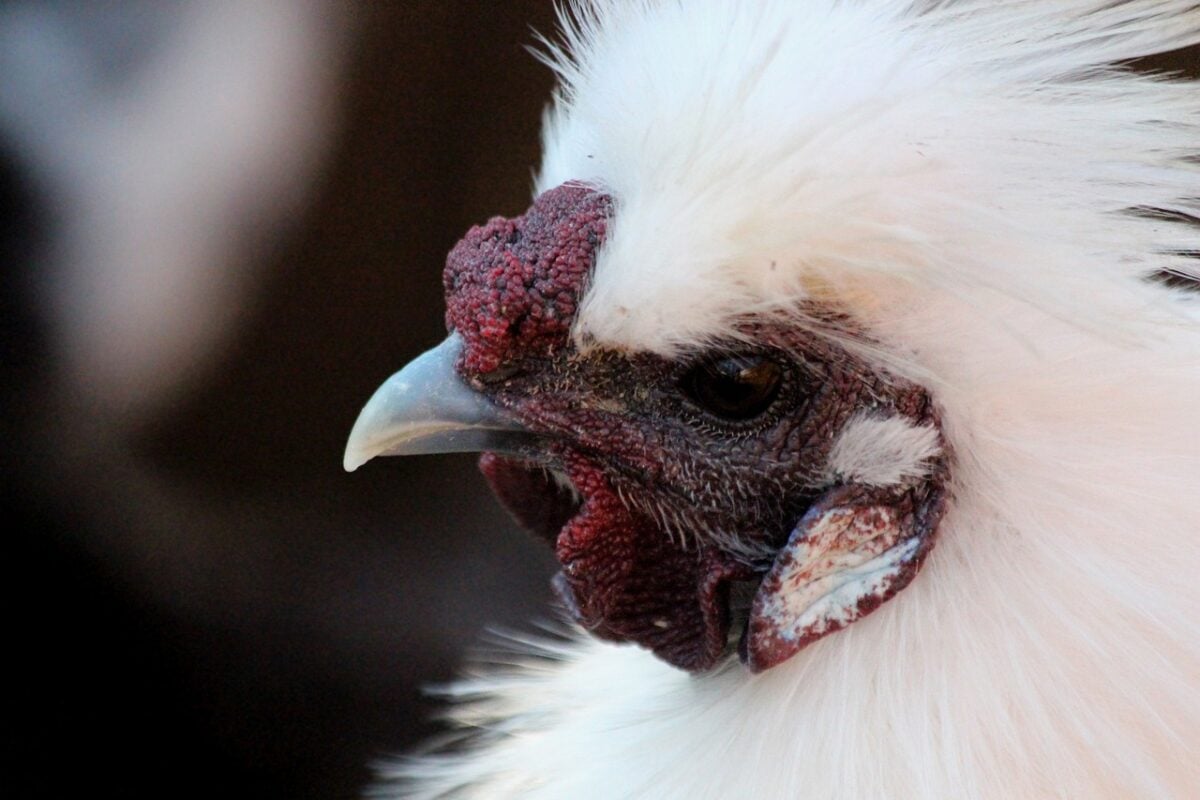If you are a poultry hobbyist, you must have heard of the adorable Silkie chicken! This unique breed is unlike any other and has been beloved by people worldwide for centuries.
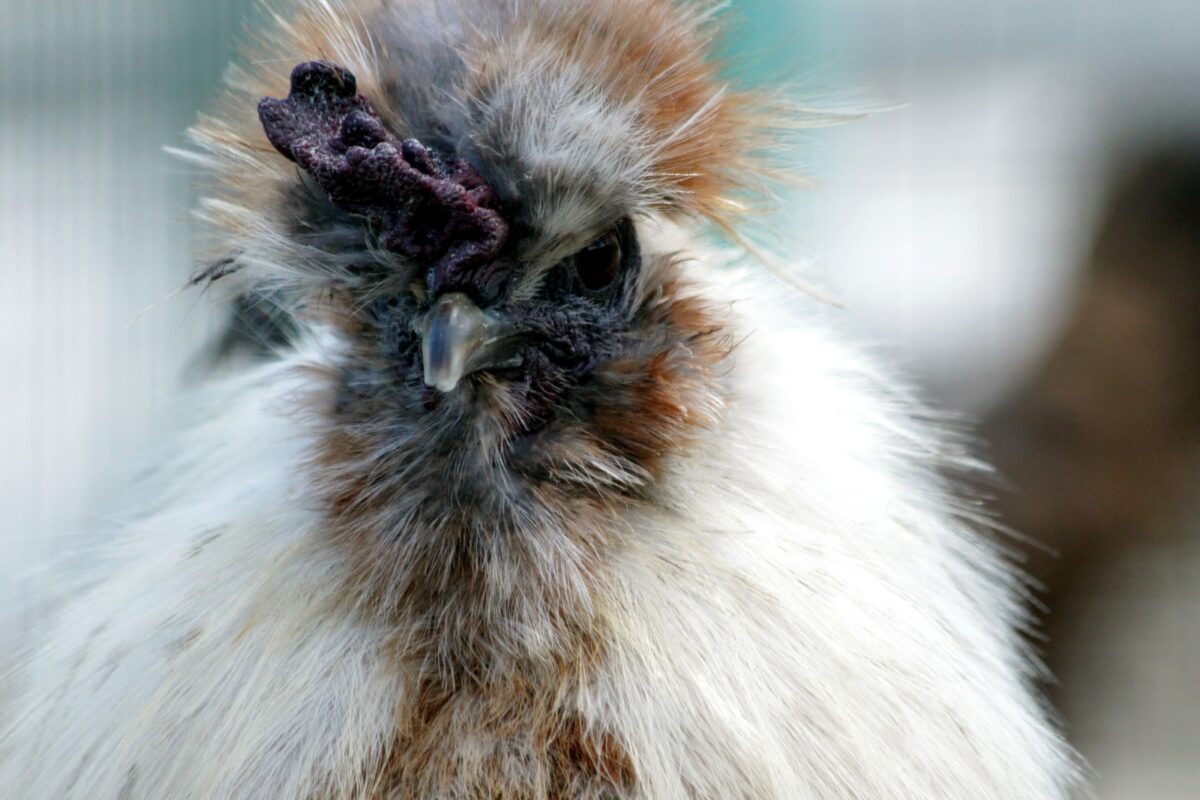
With its fluffy feathers resembling fur, this petite bird is one of the most visually unique breeds of chickens. But that’s not all – there’s much more to this fantastic feathered friend than its looks!
Let’s learn about Silkies – from their history and care requirements to tips on how to raise them in your backyard.
Read on and discover why these birds will captivate anyone who sees them!
Unique Characteristics That Make Silkie Chickens Distinct From Other Breeds
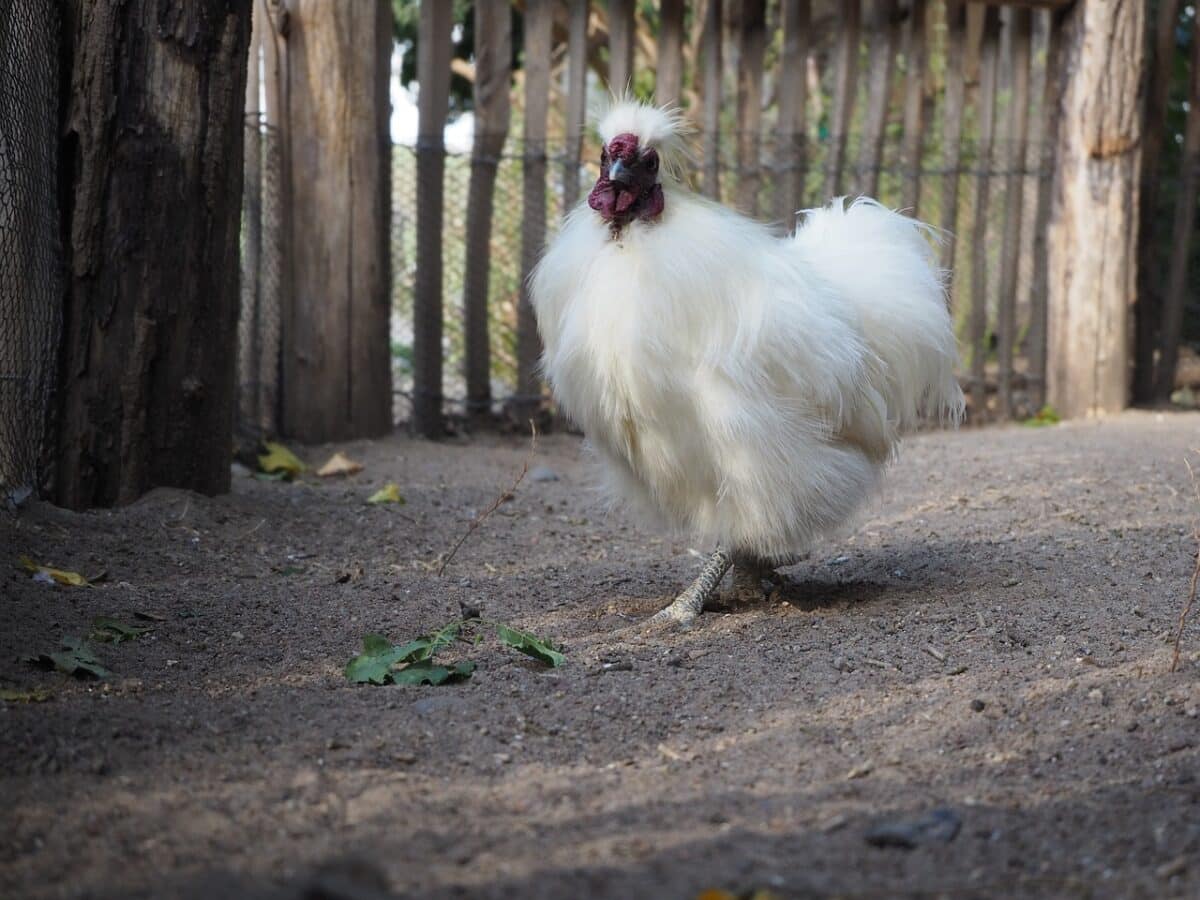
Silkie chickens are a breed of poultry known for their distinctive fluffy plumage, which is said to feel like silk or satin to the touch. Here are some of the unique characteristics that make Silkies distinct from other breeds:
#1 Plumage
Silkies have a fluffy and soft plumage that is “silky” or “satin-like.” The feathers lack the barbicels that hold the feather together, thus making them look like hair.
#2 Color
They come in various colors, including white, black, blue, and splash. They can also have a mix of different colors.
#3 Appearance
The Silkie Chicken has a unique and distinctive appearance. It has a rounded head with a crest of feathers and a protruding “beard” of feathers on its chest. They also have black skin, bones, and meat.
#4 Size
Silkies are miniature to medium-sized breeds of chicken, with hens typically weighing between 2.5 and 3.5 pounds and roosters weighing between 3 and 4 pounds.
#5 Temperament
Most people find Silkie Chickens docile and friendly, making them a popular choice as a pet or backyard chicken.
#6 Broodiness
Silkies are very broody, meaning they strongly desire to sit on and hatch eggs.
#7 Lack Of Feathers On Legs And Feet
Silkies have a unique characteristic: they lack feathers on their legs and feet — making their skin visible, which is black.
#8 Their Ability To Adapt To Different Climates
Silkies can tolerate both warm and cold weather, making them suitable for different climates.
In short, it is a unique and exciting breed of chicken that can make excellent pets or backyard birds. While their soft plumage and friendly temperament are notable, it is essential to consider their smaller size and heavy broody nature before bringing them home.
History and Origin
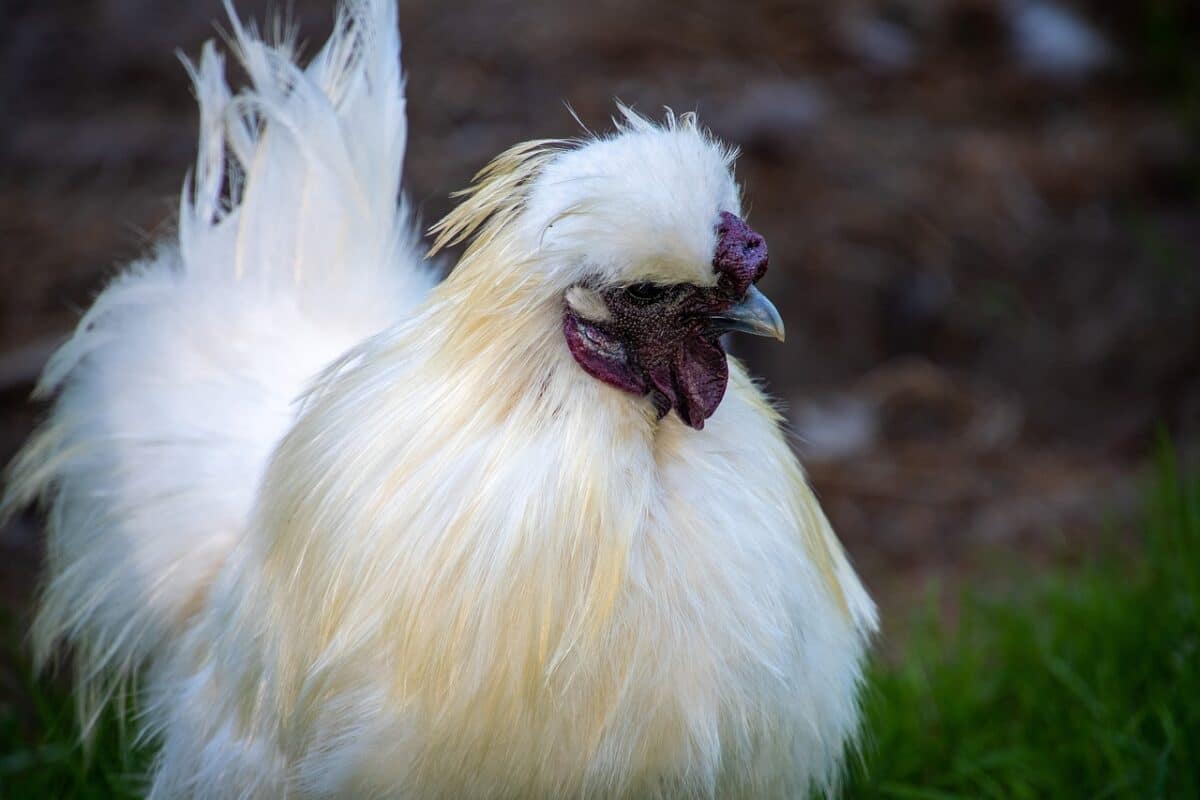
The origins of the Silkie chicken aren’t very well-documented, but it is thought that the breed was first developed more than 2,000 years ago in the region now called China.
According to Chinese legend, Chinese Emperors kept Silkies in the imperial palace and were highly valued for their medicinal properties. The Chinese believed that eating Silkie meat and drinking Silkie soup would help with various ailments, such as improving circulation and promoting longevity.
Silkies were first exported to the Western world in the 13th century. Traders and merchants brought Silkies to Europe, but it took centuries for them to gain popularity in the Western world.
During the 19th century, the interest in Silkies grew among poultry enthusiasts in Europe and North America. This silky bird was first imported in the mid-1800s to the United States, and the American Poultry Association officially recognized the breed in 1874.
The popularity of Silkies continued to grow in the 20th century, and they are now considered a unique and distinctive breed of poultry. They are widely kept in many countries as backyard chickens, pets, or for show purposes.
Today, the breed has wide varieties and different color forms. The Silkie chicken breed is still famous for its medicinal properties and is still highly valued in some cultures.
In conclusion, Silkie chickens have a long history dating back to ancient China. Allegedly, Chinese emperors deemed them a delicacy for their supposed medicinal properties. They were brought to the Western world through the Silk Road trade routes and have gained popularity as a unique and distinctive poultry breed since then.
Physical Characteristics
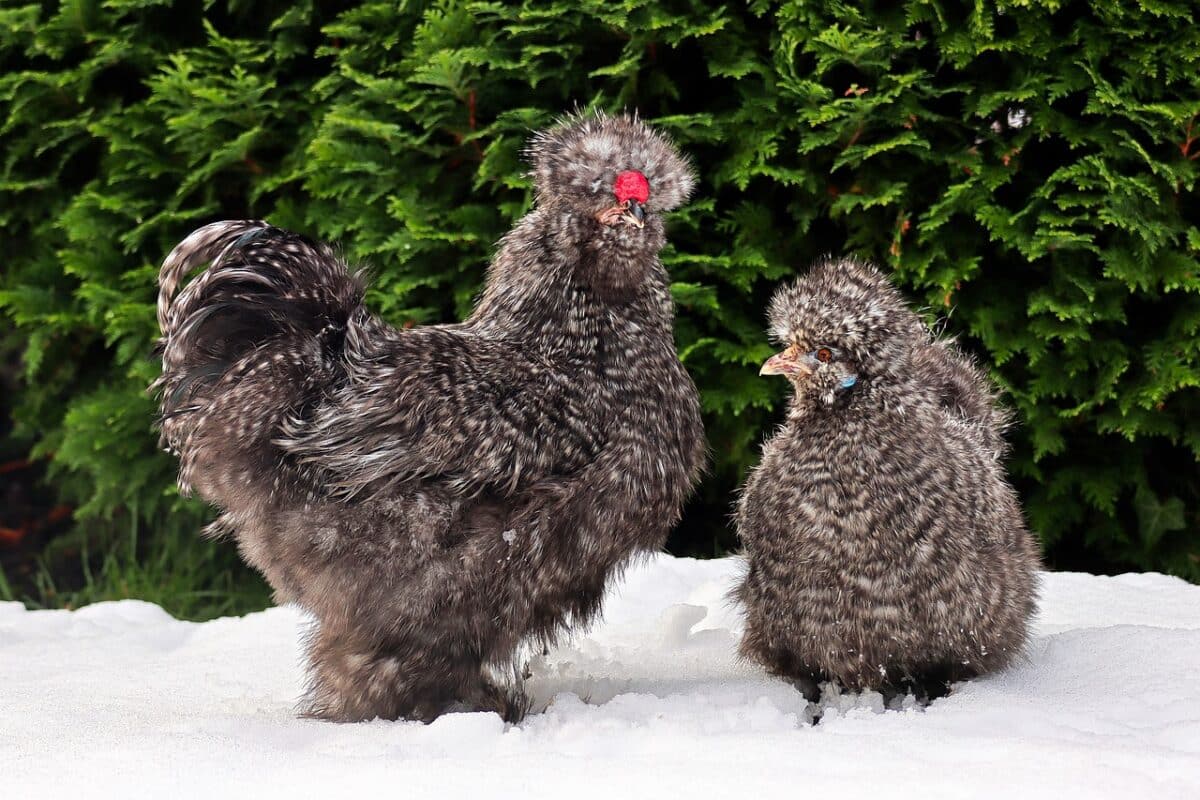
Silkie chickens get much attention for their unique physical characteristics, making them stand out from other poultry breeds. Here are some of the fundamental physical characteristics of Silkie chickens:
#1 Head and Face
Silkies have rounded heads and a small crest of feathers on their heads. They also have a protruding “beard” of feathers on their chests. Their eyes are usually dark and round, and their beaks are usually black or dark gray.
#2 Feet and Legs
Silkies have black skin, bones, and meat, and the unique feature is that they lack feathers on their legs and feet, giving them a distinctive appearance. Their legs are short and thick, and their toes are usually not webbed.
#3 Tail
Silkie chickens have short, rounded tails.
#4 Comb and Wattles
The Silkie chicken has a small, single comb that is usually dark red. They also have small, round wattles.
#5 Ear Lobes
They have small, white, and cute earlobes.
Behavior
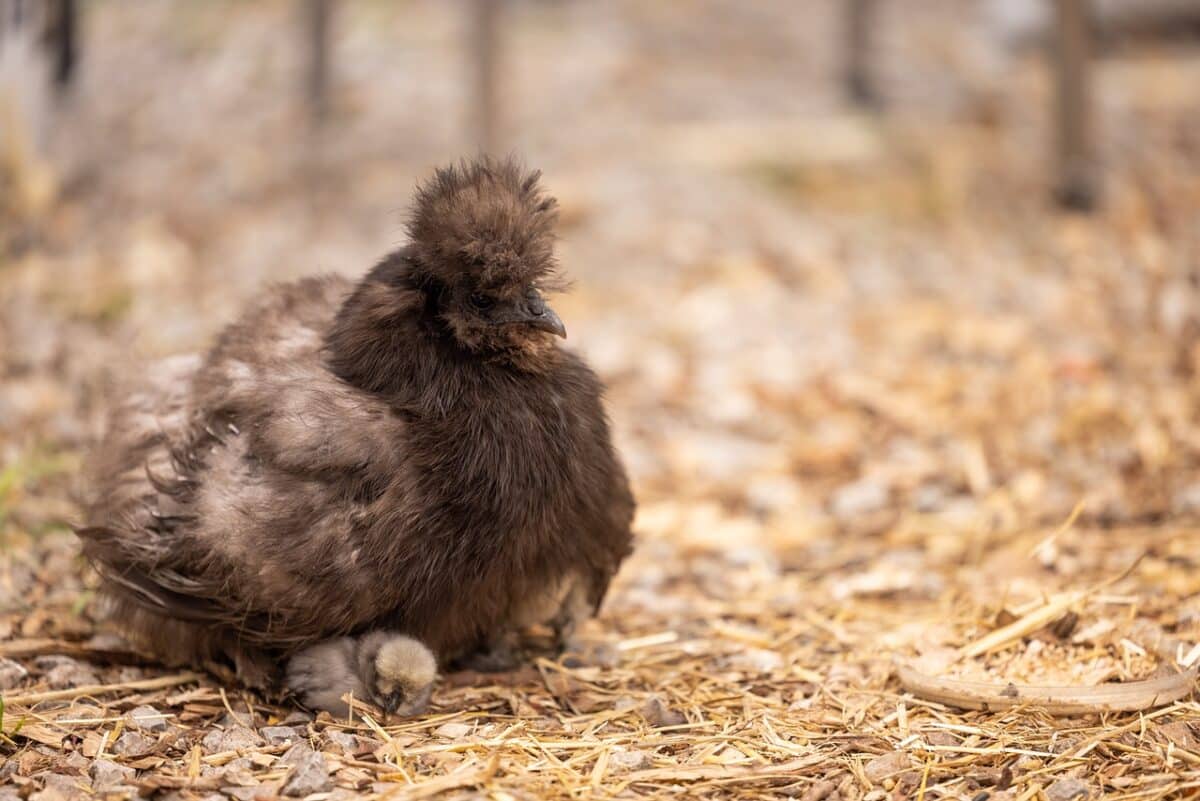
Silkie chickens are docile and friendly birds with a tendency to be quite pleasant. They are usually quite active and enjoy foraging for food.
Overall, the Silkie Chicken has many unique physical characteristics that distinguish them from other poultry breeds.
Care And Maintenance Requirements For the Silkie Chicken
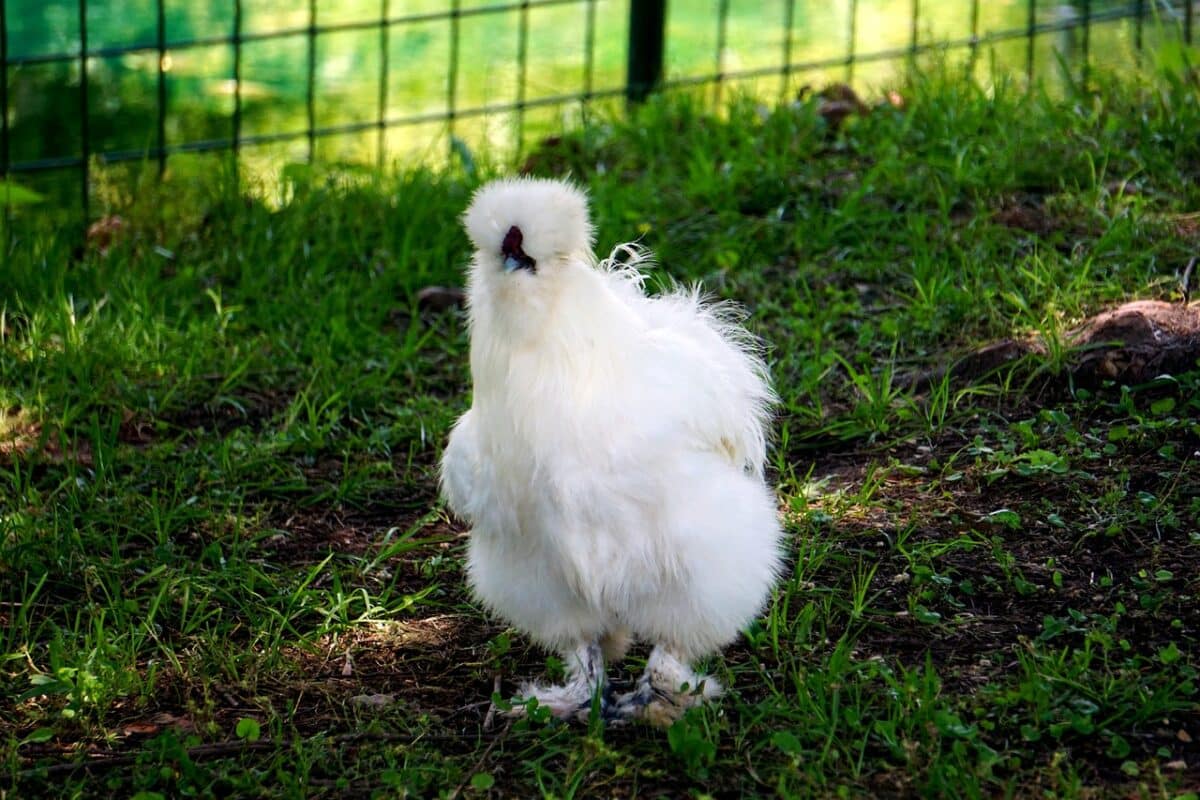
Silkie chickens are hardy and easy to care for the poultry breed, but they have specific care and maintenance requirements that must be met to keep them healthy and happy. Here are some fundamental care and maintenance requirements for Silkie chickens:
#1 Housing
They need a warm and secure coop or chicken house to live in. The coop should be well-ventilated but protected from drafts, rain, and extreme heat or cold. It is recommended to have a secure run or fenced yard to allow them to forage and exercise.
#2 Feeding
This creature will eat standard chicken feed. It is recommended to feed them a complete diet formulated for their age, size, and activity level. In addition to commercial feed, they will also enjoy greens, fruits, insects, and mealworms as treats.
#3 Water
Silkie chickens will need access to clean, fresh water at all times. A watering system that can’t be easily knocked over or spilled is recommended.
#4 Grooming
They have fluffy and soft plumage that needs to be kept clean to avoid matting or soiling. You should groom them regularly to remove debris and dirt and to prevent feather problems. During the molting season, it is essential to check and remove loose feathers to prevent feather pecking among birds.
#5 Health
Silkies are generally hardy and healthy birds but regularly check for signs of illness or parasites. Parasite control and regular deworming are also essential to keep them healthy.
#6 Socialization
They are docile and friendly birds that enjoy human interaction. Although they enjoy human interaction, one should handle them regularly to get them used to it.
#7 Protection From Predators
As with all chickens, silkie chickens are vulnerable to predators, such as raccoons, skunks, hawks, and foxes. Their housing, run, and yard must be secure to prevent predation.
#8 Extra Protection
These chickens lack feathering on their legs and feet, making them more susceptible to frostbite and cold. Therefore, if you live in an area with colder winters, ensure their housing is well-insulated and provide them with additional bedding to keep their feet and legs warm.
They are a low-maintenance and easy-going chicken breed, but they must meet specific needs to ensure their well-being. We have to provide them with a safe and secure living environment, a healthy diet, and regular grooming and health checks; this way, you will ensure that your Silkies live long, happy lives.
Common Health Issues or Concerns That Are Specific To the Silkie Chicken
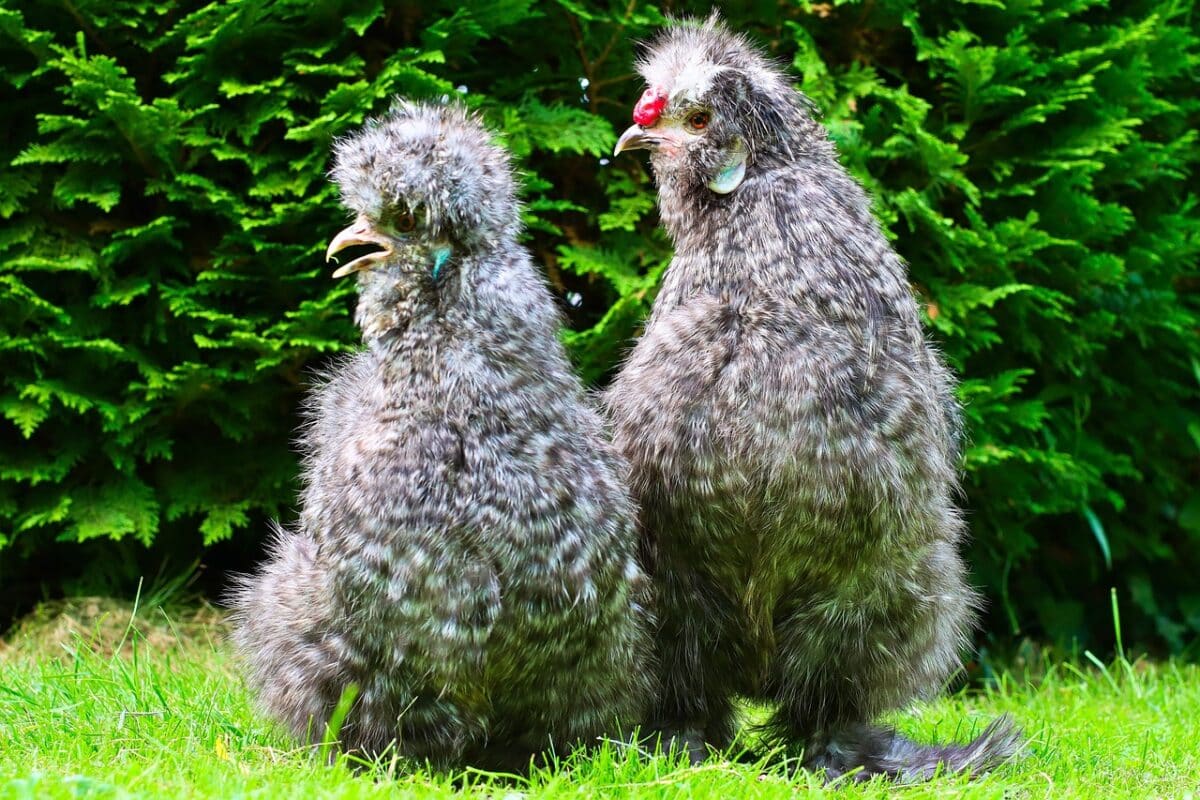
Silkie chickens are generally hardy and healthy birds but have certain health issues or concerns specific to their breed. Here are some common health issues or concerns that are specific to Silkies:
#1 Feather Pecking
Silkies have fluffy and soft plumage, which can make them more prone to feather pecking. Feather pecking is when birds peck at and damage the feathers of other birds, which can lead to feather loss and injury or infection. To prevent feather pecking, keep the coop clean and free of debris, and provide your birds with plenty of space to move around.
#2 Heat Stroke
They have a fluffy and thick plumage, making them more susceptible to heat stroke. If exposed to high temperatures for extended periods this will occur. To prevent heat stroke, ensure plenty of shade and ventilation in the coop and keep the birds in a relaxed and comfortable temperature.
#3 Bumblefoot
Bumblefoot is a condition that occurs when a bird’s foot becomes infected and inflamed. It can happen due to various factors, such as standing on hard surfaces or poor sanitation. Silkies can be more prone to bumblefoot because they lack feathering on their legs and feet. Keep the coop clean to prevent bumblefoot and provide your birds with soft and clean bedding.
#4 Joint and Bone Issues
Silkies are much smaller than the average chicken and have a unique bone structure. These factors can make them more prone to joint and bone issues such as arthritis or skeletal deformities. To prevent these issues, ensure your birds have a balanced diet and avoid overfeeding them.
#5 Coccidiosis
Coccidiosis is a parasite infection that affects the intestinal tract of chickens. Silkies can be more susceptible to coccidiosis because of their small size and delicate immune systems. To prevent coccidiosis, keep the coop clean and provide your birds with a balanced diet.
#6 Respiratory Infections
Silkies are more susceptible to respiratory infections because of their fluffy and thick plumage which can trap moisture and create a damp environment for bacteria to grow. Ensure your birds have good ventilation and adequate airflow to prevent respiratory infections.
Note that these health issues are not limited to Silkies, and other breeds of chicken may also experience them. However, Silkies are a touch more prone to these issues. Regular checkups, providing a balanced diet, maintaining a clean coop, keeping an eye out for signs of illness, and prompt treatment if an illness is suspected are essential preventative actions.
Various Uses and Purposes of the Silkie Chicken
Silkie chickens are a unique and distinctive poultry breed with several uses and purposes. Some of the most common uses and purposes of Silkies include:
Eggs: Silkie hens are good layers, producing around 100-150 eggs per year, and their eggs are small to medium-sized and pale-tinted blue. Learn more about the eggs of the Silkie Chicken here.
Meat: Silkies are a delicacy in some cultures due to their meat being especially tender and flavorful.
Show Birds: Silkies are popular among poultry enthusiasts and are often shown at poultry shows and competitions. Silkies have a distinctive and unique appearance that makes them stand out in competition. They have various colors, varieties, and types.
Pets: Because of their friendly and docile nature, they are popular backyard pets. They are very hardy and can adapt to different climates, making them suitable for various types of weather.
Therapy Animals: Silkies have a calming and soothing effect; they are used in therapy programs for kids and adults with special needs, such as autism.
Ornamental Birds: People also keep Silkies for ornamental purposes. Their unique appearance and beautiful plumage make them an exciting addition to any backyard or garden.
Research: Silkies are used in scientific research for their unique characteristics, like black skin, bones, and meat. They are also used in genetic research due to their unique feather structure.
Overall, Silkies are a versatile and multi-purpose breed of chicken, which have multiple purposes, such as egg and meat production, poultry shows, pets, therapy, breeding, and ornamental birds.
Their unique characteristics make them stand out from other chicken breeds. A large variety of people can enjoy them; poultry enthusiasts, farmers, backyard chicken keepers, or those who want them for their beauty.
Silkie Chicken – A Popular Choice Among Poultry Enthusiasts
Silkie chickens are popular among poultry enthusiasts due to their unique and distinctive appearance and friendly and docile temperament. Here are some reasons why Silkies are a popular choice among poultry enthusiasts:
#1 Friendly and Docile
Silkies have a famously friendly and docile nature, which makes them a popular choice as backyard pets. They are gentle and easy to handle, making them an excellent choice for families with children or those new to keeping chickens.
#2 Good Layers
Silkies are good layers, producing around 100-150 eggs per year. Their eggs are small to medium-sized and pale-tinted blue. They are a good choice for backyard chicken keeping, where their eggs can collect daily.
#3 Hardiness
They are a hardy and resilient breed, able to adapt to different climates and weather conditions, which is why they are popular among poultry enthusiasts.
#4 Suitable For Small Backyard and Urban Farms
Silkie chickens are small in size and do not require much space; therefore, they can be a good choice for small backyard or urban farms.
In short, they are a popular choice among poultry enthusiasts due to their unique and distinctive appearance, friendly and docile temperament, good egg production, broody nature and hardiness – making them suitable for backyard and urban farms.
Key Points:
| The Silkie chicken is a breed of poultry that is believed to have originated in ancient China. |
| Silkies have rounded heads and a small crest of feathers on their heads. They also have a protruding “beard” of feathers on their chests. |
| Silkies are more susceptible to respiratory infections because of their fluffy and thick plumage, which can trap moisture and create a damp environment for bacteria to grow. |
| Silkies are popular among poultry enthusiasts and are often shown at poultry shows and competitions. |
| Silkies are good layers, producing around 100-150 eggs per year, and their eggs are small to medium-sized and pale-tinted blue. |
Conclusion
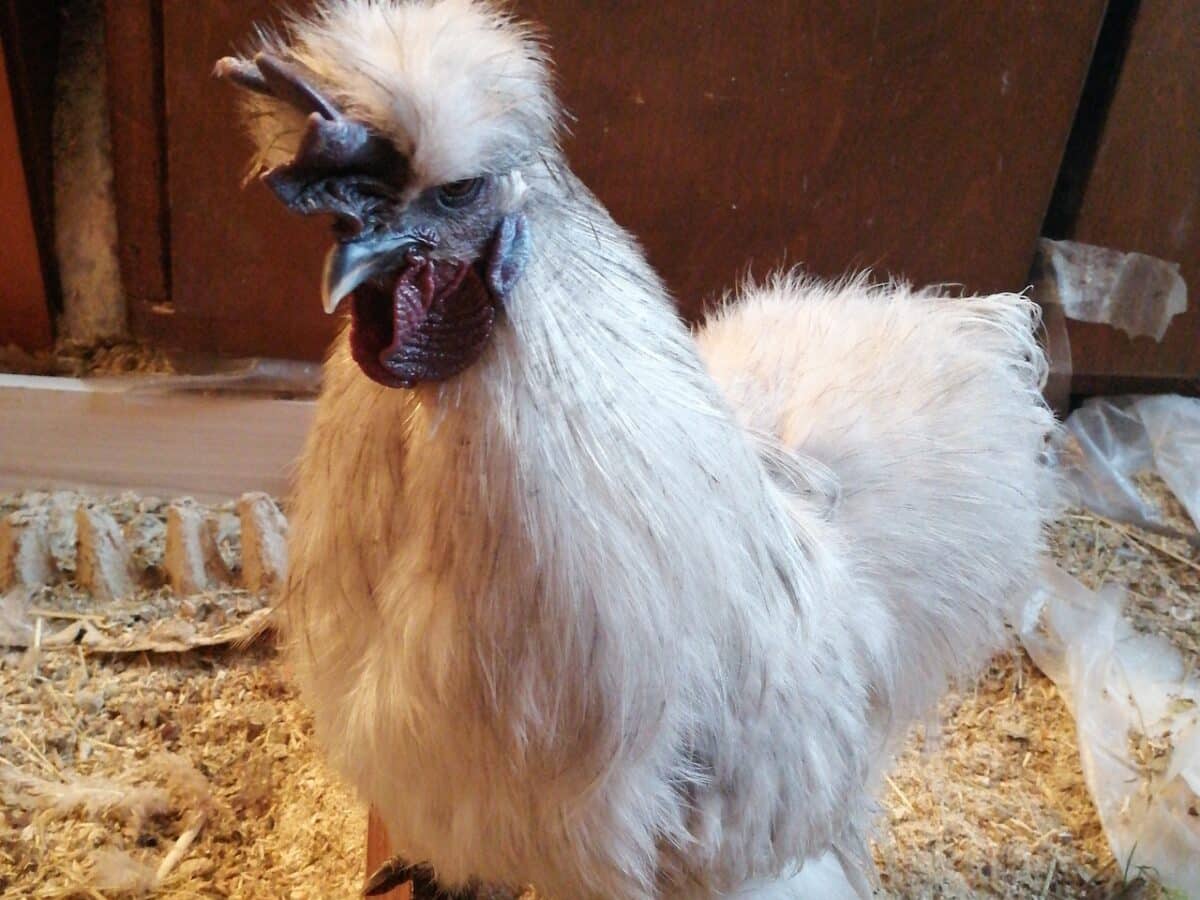
Undoubtedly, Silkie chickens are a distinctive poultry breed valued for centuries for their unique appearance and medicinal properties. These small, fluffy birds are known for their friendly and docile nature, making them a popular choice as backyard pets.
They have a lot to offer, from their unique and beautiful appearance to their gentle and friendly nature, making them an exciting and valuable addition to any backyard, farm or family.
Thank you for reading this article! If you’re avid about avians, you will also like our post about another affectionate bird – the Cockatoo.
- Magpie Bird Is Reunited with Her Dog Best Friend - April 24, 2024
- Dog Saves Another Dog From Drowning in Fish Pond - April 23, 2024
- Man On Motorbike Rescues Cat From Highway - April 23, 2024

